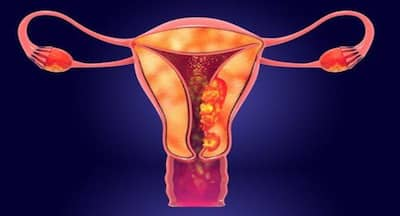
Raising awareness about uterine cancer is crucial, as early detection significantly improves treatment outcomes.
Infertility can be a challenging and emotionally taxing experience for women. Sometimes, the journey to determine the cause of infertility may lead to a diagnosis. While this type of cancer has traditionally been associated with women above 50 who have reached menopause, there has been a noticeable increase in younger women diagnosed with uterine cancer in recent years.
Over The Past Five Years
The increase in uterine cancer cases has been linked to risk factors such as obesity, hypertension, and diabetes, contributing to hyperestrogenism, a leading cause of the most common endometrial cancer. Furthermore, a small percentage of cases can be attributed to genetic factors or acquired causes, such as infertility treatments, which have been linked to an increased incidence of uterine and endometrial cancer.
That Being Said
Uterine cancer (including endometrial cancer and uterine sarcoma) has been shown to have a reasonable survival rate when detected early. The five-year survival rate for stage one endometrial cancer is over 95%1. Fortunately, advancements in medical technologies have significantly enhanced the diagnosis and treatment of uterine cancer. Dr Rohit Ranade, Gynaecology Oncology Consultant and Robotic Surgeon at Narayana Health Bangalore, shares that technologies like transvaginal ultrasound, hysteroscopy, endometrial biopsy, MRI, and CT scans enable accurate visualization and assessment of the uterus, facilitating early detection.
READ RELATED: Increase Sperm Count With Yoga: 10 Asanas and Mudras to Improve Fertility Naturally
Understanding Uterine Cancer And Infertility
- While uterine cancer does not necessarily hinder pregnancy in all cases, women with cancerous growths or pre-cancerous conditions affecting the endometrium may face challenges conceiving due to compromised uterine lining quality. A thorough diagnosis is crucial to identify and treat uterine cancer promptly.
- For a select group of young women with endometrial cancer, temporary treatment options such as hormone-releasing intrauterine devices or oral tablets may be employed. Once the woman becomes tumour-free, the possibility of pregnancy can be explored. However, following up with a hysterectomy after completing desired pregnancy is essential to ensure long-term cancer control. Robotic-assisted surgery allows surgeons to skillfully remove the entire uterus and associated structures, enabling the removal of tumours and lymph nodes while minimizing damage to the ureter.
Recognizing Symptoms And Early Detection
Postmenopausal bleeding, occurring after menses have ceased, is a significant symptom often associated with uterine cancer and requires immediate medical attention. In younger women, symptoms may manifest as excessive or intermenstrual bleeding during regular cycles. This is a crucial factor, as women who have not yet reached menopause may not pay much heed to heavy or intermenstrual bleeding, leading to delayed diagnosis.
Treatment Approaches and the Role of Robotic-Assisted Surgery
- In stage one, a hysterectomy is the primary form of treatment, which may involve the removal of the fascia of the uterus and selective or comprehensive pelvic and para-aortic lymph node dissection. Stage two cancers affecting the cervix require a radical hysterectomy that includes the removal of the uterus, fascia, and associated ligaments. In stage three cancers, treatment involves hysterectomy and the removal of affected areas and ovarian masses.
- Robotic-assisted surgery has revolutionized the approach to treating uterine cancer, particularly in stages one and two. The precision and benefits offered by robotic-assisted surgery, including 3D vision, enhanced depth perception, and improved access to challenging pelvic areas, make it an ideal choice, especially considering the complex nature of the pelvic region. Achieving precision in removing lymph nodes while preserving vital structures such as blood vessels, nerves, and the ureter is possible through robotic-assisted surgery. Additionally, it proves particularly beneficial for obese patients with a BMI above 35, as moving the patient and accessing critical anatomical structures can be more challenging in traditional surgeries. Robotic-assisted surgery mitigates these issues, facilitating smoother surgical removal. Moreover, it is also highly advantageous for patients with diabetes or hypertension, reducing the risk of complications and infections.
- Patients undergoing robotic-assisted surgery experience reduced pain, faster recovery, earlier resumption of everyday activities, and a decreased risk of infection. Robotic surgery allows for an earlier start for patients requiring additional treatments such as radiation or chemotherapy.
Promoting Awareness and Early Intervention
- Raising awareness about uterine cancer is crucial, as early detection significantly improves treatment outcomes. While there is currently no screening protocol for uterine cancer, recognizing signs and symptoms is paramount. Fortunately, uterine cancer typically progresses slowly, especially in the case of the most common types.
- Uterine cancer poses a growing concern worldwide and in India. However, with advancements in robotic-assisted surgery, the treatment landscape has undergone a remarkable transformation. This innovative approach offers precise surgical interventions, faster recovery, and improved patient outcomes. By fostering awareness, promoting early intervention, and embracing cutting-edge technologies such as robotic-assisted surgery, significant strides can be made in combating uterine cancer and providing better lives for women affected by this disease.
Total Wellness is now just a click away.
Follow us on
window.addEventListener(‘load’, (event) => {
$(‘#commentbtn’).on(“click”,function(){
(function(d, s, id) { var js, fjs = d.getElementsByTagName(s)[0]; if (d.getElementById(id)) return; js = d.createElement(s); js.id = id; js.src = “//connect.facebook.net/en_US/sdk.js#xfbml=1&version=v2.3”; fjs.parentNode.insertBefore(js, fjs);}(document, ‘script’, ‘facebook-jssdk’));
$(“.cmntbox”).toggle();
});
});









